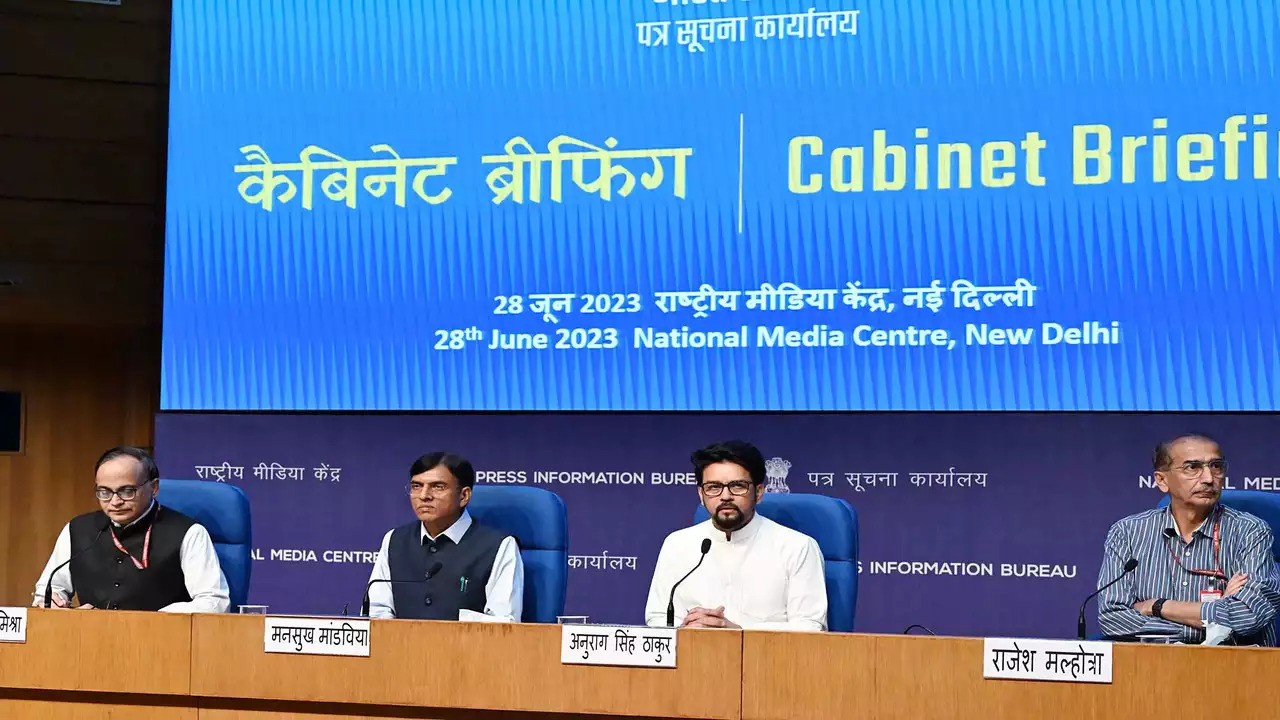Cabinet clears NRF Bill to offer strategic direction to research
Context :
On Wednesday, the National Research Foundation (NRF) Bill, 2023, was passed by the Union Cabinet. According to a press release from the Department of Science and Technology (DST), the legislation aims to create the NRF as an apex body to provide “high-level strategic direction” to scientific research in the nation under the National Education Policy (NEP) at an estimated cost of 50,000 crores between 2023 and 2028.
What is the National Research Foundation Bill, of 2023?
- Objective: The NRF Bill’s main goal is to make the NRF the leading organisation for scientific research in India, giving research initiatives a high-level strategic direction that is in line with the National Education Policy (NEP).
- Funding: Between 2023 and 2028, the NRF is anticipated to get a budget of 50,000 crore. The private sector is anticipated to invest almost 36,000 crore in research financing, compared to the government’s contribution of 10,000 crore over five years.
- Administration: The NRF will be administered by the Department of Science and Technology (DST), which will also be in charge of overseeing operations and execution.
- Governance: The NRF will be governed by a board of distinguished scientists and professionals. The Union Ministers of Science, Technology, and Education will serve as ex-officio vice presidents and the Prime Minister will be the ex-officio president of the Board. The executive council in charge of overseeing the operation of the NRF would be presided over by the Principal Scientific Adviser to the Government of India.
- Repeal of SERB: The Science and Engineering Research Board (SERB), formed by Parliament in 2008, will be replaced by the NRF. The NRF will incorporate SERB, streamlining the system for supporting research.
- Equity in Research Funding: The NRF seeks to correct the current imbalance in which public universities receive a smaller percentage of funding (about 10%) than prominent institutes like the IITs and IISc.
National Research Foundation
- Establishment and Cost:
-
- The National Research Foundation (NRF) is a proposed organisation that is intended to be set up in India to assist and encourage research and development activities.
- The National Education Policy’s (NEP) proposals served as the foundation for the creation of the NRF.
- The NRF is anticipated to cost 50,000 crore in total between 2023 and 2028.
- Over five years, the government aims to contribute Rs. 10,000 crore.
- The business sector is anticipated to contribute over 36,000 crores as research investments.
- DST’s function:
-
- The NRF will have a department called “administrative” called the Department of Science and Technology (DST).
- This indicates that the DST will operate under the auspices of the NRF and that its duties and responsibilities will be in line with those of the NRF.
- Initiatives for research and development under the NRF are likely to receive support and coordination from the DST.
- The body that regulates:
-
- A Governing Board will be in charge of the NRF’s operations and decision-making procedures.
- The ex-officio President of the Board will be the Prime Minister of India, demonstrating the significance and high level of involvement of the government in the NRF.
- The ex-officio Vice-Presidents of the Board shall be the Union Ministers of Science & Technology and Education.
- The Board is anticipated to comprise eminent academics and experts from a range of fields, adding a variety of viewpoints and knowledge.
- Executive Council:
-
- An Executive Council will oversee how the NRF operates.
- The Executive Council will be presided over by the Principal Scientific Adviser to the Government of India, who would emphasise how scientific knowledge influences the NRF’s policies and decisions.
- The NRF’s objectives will be put into effect effectively thanks to the Executive Council’s formulation of policies, strategic judgement, and implementation decisions.




